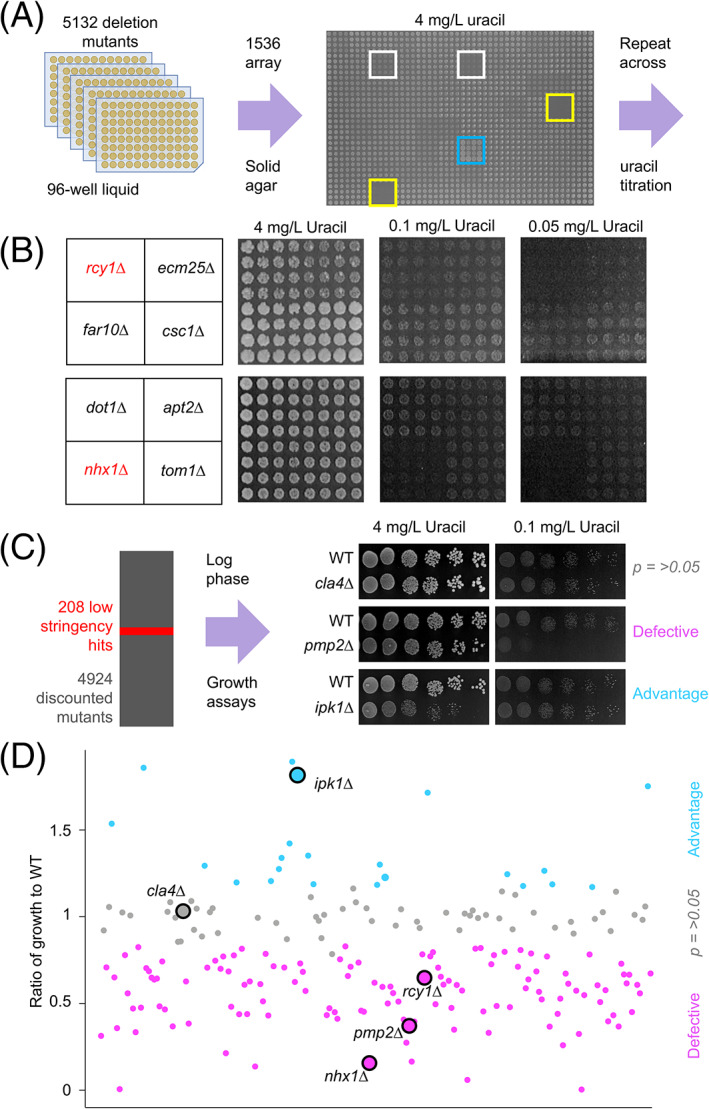FIGURE 3.

A genetic screen for mutants that affect uracil‐scavenging. (A) Yeast strains grown overnight in 96‐well plates were diluted 20‐fold in water then replicated 16 times onto solid agar plates containing varying uracil concentrations. An example 4 mg/L uracil plate shows identifier wells (yellow), alongside strains with defective (white) and accelerated (blue) growth. (B) Example of screen data showing indicated mutants grown on media containing 4, 0.1 and 0.05 mg/L uracil, including known Fur4 trafficking mutants (red). (C) The screen identified 208 candidates that were subsequently grown to mid‐log phase and spotted out over a 6‐step, 10‐fold serial dilution onto high (4 mg/L) and lower (0.1 and 0.05 mg/L) uracil containing media. Uracil‐related cellular growth relative to wild‐type was quantified and categorized as defective (eg, pmp2∆), advantageous (eg, ipk1∆) or not significantly altered (eg, cla4∆). (D) Ratio of relative growth between 4 and 0.1 mg/L uracil from (C) was plotted for all candidates
